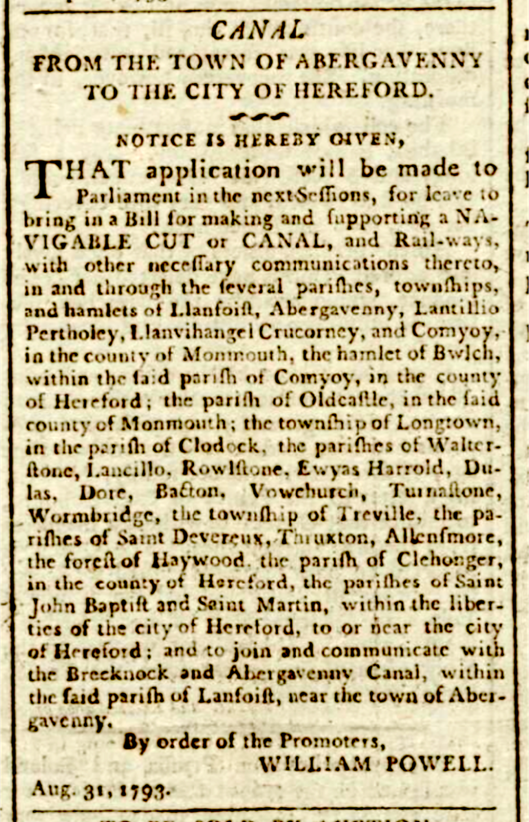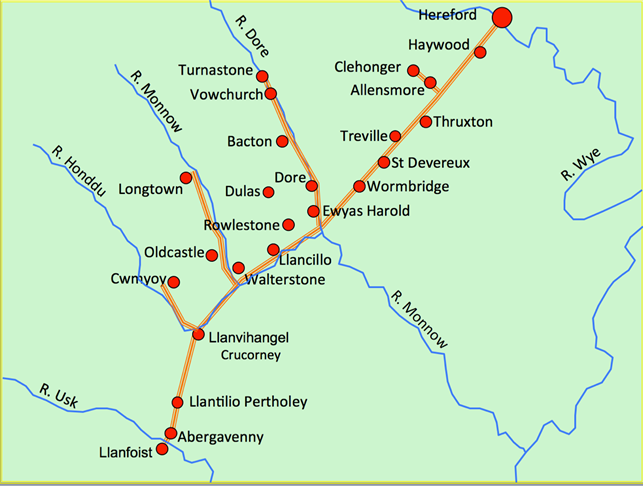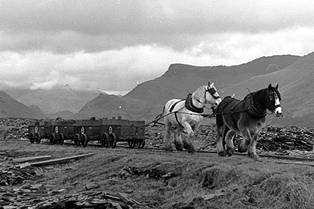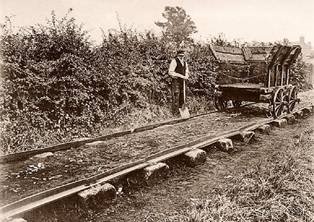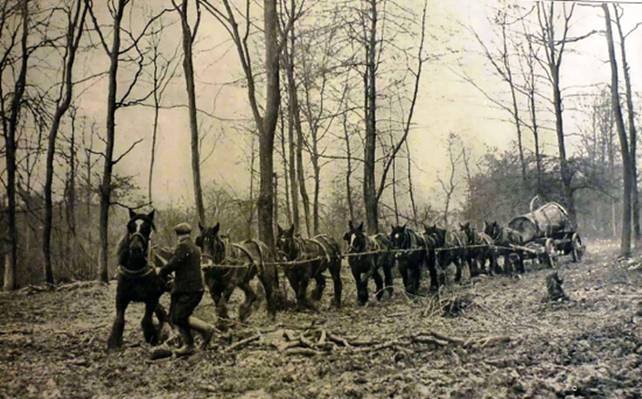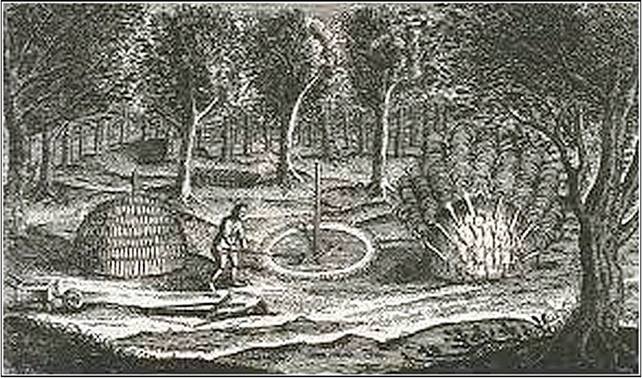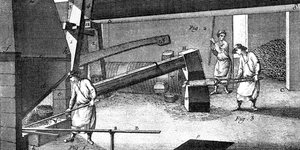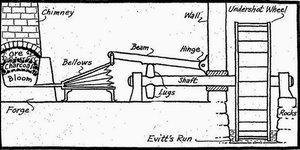Title: | Longtown Canal |
Date: | 1793 |
Longtown Canal
By Bob Steele
On August 31st 1793 an advertisement appeared in local newspapers giving notice that an application was to be made to Parliament for a Bill to permit the construction of a canal between Abergavenny and Hereford. This scheme was nothing if not ambitious. It proposed a link to the Brecknock and Abergavenny canal at Llanfoist, leading from there through Abergavenny to the vicinity of the Wye Bridge at Saint Martins in Hereford. This was to be supported with a network of other canals or railways ‘with other necessary communications’ covering much of the southern part of Ewyas Lacy and beyond, which would feed into the main route. This network apparently included a proposed canal to Longtown.
|
|
| Photograph by Martin Cook |
Amongst the beneficiaries of the proposed scheme were not only the township of Longtown but also the parishes of Clodock, Walterstone, Llancillo and Rowlestone in Ewyas Lacy. Neighbouring areas of Oldcastle, Cwmyoy, Bwlch, and large parts of the Golden Valley including Ewyas Harold, Bacton, Vowchurch and Turnastone were also part of the plan, as were other parts of Monmouthshire and Herefordshire.
The exact route that the promoters had in mind is not specified in the advertisement, but it seems likely that it would broadly have followed the line of the current A465 main road from Abergavenny to Hereford as did the later nineteenth century tramway and subsequent railway. Any feeder canals proposed might be expected to follow the river valleys of the area, along the rivers Honddu, Monnow and Dore. The map below is an interpretation of how the scheme might have looked based on the places mentioned in the 1793 notice.
|
|
| Map by Martin Cook |
However, the lie of the land is such that a canal would probably never have been practical for the first part of the main Abergavenny to Hereford link. The Brecon and Abergavenny canal at Llanfoist runs along the 110 metre contour line up the Blorenge mountain and would have needed a mammoth lock flight to get from there down to join a canal at the level of the river Usk in Abergavenny. Likewise there is a significant gradient up from Abergavenny to Llanvihangel, steep enough to require an extra 'Banker’ locomotive at Abergavenny to push steam-hauled freight trains up the slope on the GWR main line as late as the mid -twentieth century. This would almost certainly have made locking up and down a canal problematic on that stretch too.
Further along the route, canals might well have been feasible despite large seasonal variations in water flow levels in the tributary rivers of the area. The rocky nature of the Honddu river bed would have made that branch difficult, but the Monnow might have been somewhat more amenable at least as far as Longtown. The meandering Dore would probably have offered a reasonably forgiving route for canal builders as it did later for the Golden Valley Railway - and indeed that branch might even have been capable of extension beyond Vowchurch to Peterchurch along the line of Rowland Vaughan’s sixteenth century waterworks and ‘Trench Royal’ there.
There is, however, no evidence that the suggested canals ever got off the drawing board, though it seems likely that the promoters of the scheme did not abandon their project altogether. The proposed parliamentary bill included the possibility of ‘rail-ways’ as well as canals. In the late 1700s, around the time these proposals were being drawn up, there were already plans for rail-based tramroads linking the Blaenavon ironworks to the Brecknock and Abergavenny canal at Llanfoist and perhaps extending onwards to Abergavenny. A series of other tramroads were opened in the early 1800s between Abergavenny and Hereford. Allowing for the time to get an bill through parliament, drum up finance and carry out the construction works, the dates make it seem possible that those ‘rail-ways’ were the fruits of, or inspired by, the proposal the promoters had advertised in 1793.
At the end of the eighteenth century, of course, these were not the railway lines of today. A tram road or plateway was an early kind of railway using "L"-shaped rails or plates made from cast iron to guide the wheels of horse-drawn wagons and provide a smooth solid running surface under them. Much greater loads could be pulled on such rails compared to dragging wagons over the rutted and muddy roads in Ewyas Lacy at the time, and the tramroads were much less vulnerable to bad weather which often rendered other local routes impassable. The plates were supported on stone blocks, which served to spread the load over the ground and to maintain the distance between the rails, while leaving the path between them free of obstruction for the draught horses pulling the wagons.
|
|
|
| Horse-drawn wagons on a Plateway | An early Plateway |
A research paper on Railway Ventures in the Ewyas Lacy Area describes the development of early tramroads and their later transition to standard-gauge steam railways. It includes the following description of the Abergavenny to Hereford route:
The Llanvihangel tramroad was opened from Abergavenny to Blaengavenny on 12th March 1814 and extended a short distance in 1818 to Llanvihangel Crucorney. Here it joined the Grosmont tramroad which was opened through to Monmouth Cap (about a mile south of Pontrilas) in 1819. An Act was obtained in 1826 for the purpose of making a tramroad, or railway, from the end of the Grosmont Railway at Monmouth Cap in the parish of Llangua to the Wye Bridge within the Liberties of the City of Hereford. A plate railway about 11¾ miles in length, it was opened on 21st September 1829 and the traffic worked by horses. All three tramroads were purchased by the Newport, Abergavenny & Hereford Railway under its Act of Incorporation in 1846, and the route followed by the new railway was largely that of the original tramroads.
Traces of the old way can be seen on both sides of the former G.W.R. line between Hereford and Abergavenny, and also near Govilon and Clydach on the Abergavenny Junction to Merthyr line.
The Grosmont Railway was sold in 1846 to the Newport, Abergavenny and Hereford Railway Company for £16,250, along with the Llanvihangel Railway for £21,750 and the Hereford Railway for £19,460. The new company replaced the combined tramroads with a standard-gauge steam railway. The replacement railway was built to the north of the old line, while the tramroad became a road (now part of the main A465 road between Abergavenny and Hereford). At Werngifford a major remnant survives in the form of a 360m length of tramroad embankment with stone sleepers in situ. It is designated a scheduled ancient monument.[3]
But what about the Longtown Canal and its proposed companions in the Honddu and Dore valleys? The commercial justification driving the promoters of those ventures must have rested on stronger grounds than merely channelling agricultural produce from the countryside to the markets of Abergavenny and Hereford. There were two important factors in the economy of the local area that may have underpinned their thinking.
The first of these is the demand for what had become known as ‘Navy Timber’. The area of Ewyas Lacy was historically heavily forested, a good part of which was Oak. For almost two centuries through the American Revolution, wars with France, wars with Spain and dozens of other wars, conquests and explorations, Britannia ruled the waves thanks to the wooden ships of the Royal Navy. It took about 4,000 oak trees, or up to 40 hectares of forest, to build a single hundred-gun ship of the line. Historians and tree experts estimate that constructing and maintaining the Royal Navy fleet between the seventeenth and nineteenth centuries would have required at least 1.2 million mature oak trees. The oak forests of Ewyas Lacy were therefore a hugely valuable resource; in 1812 for example the Whitehouse Estate near Vowchurch felled and sold 3,299 large oaks, a high proportion of which were auctioned as ‘Navy Timber’. The snag, of course, was that the remoteness and primitive road network of the area made it extremely challenging to extract whole trees weighing many tons and transport them to Navy shipyards. Canals giving access to the heart of the forests might well have seemed a practical and profitable answer to that challenge.
|
|
| Hauling timber in the forest |
The second important economic influence in Ewyas Lacy was also linked to forestry. The production of charcoal was a traditional trade followed by itinerant charcoal burners, who earned a living from the offcuts and smaller timbers left behind in the woods when larger trees were extracted.
|
|
| Engraving from 1664 showing charcoal being produced in the woods |
In the seventeenth century charcoal became one of the essential fuels of the early industrial revolution, and for the production of iron in particular. The local blast furnaces of the day, notably at Blaenavon and Clydach near Abergavenny and St Weonards near Monmouth, were mainly fuelled by coal from the Welsh mines and the pig iron they produced was highly impure. As it stood it could not be used for the many products of the industrial revolution without further refinement. Charcoal was the key to resolving this, by firing the chafery and finery furnaces that removed impurities from the crude metal. Iron-making in south-west Herefordshire and South Wales was widespread and so the ability to ship charcoal more easily and cheaply from the remote forests of Ewyas Lacy, where it was abundantly available, to forges elsewhere would have been commercially attractive.
More importantly, however, one of the strongest and most versatile materials of the time was wrought iron. To convert the ‘cold short pigs’ from the blast furnaces into much more valuable wrought iron two things were needed - charcoal for refining the metal, and water to power waterwheels that drove the massive hammers needed to pound strength into the metal. The forests and rivers of Ewyas Lacy provided both. Forges producing wrought iron were accordingly established at Llancillo, Peterchurch and Pontrilas using the rivers of the area - the same rivers earmarked for potential canals - as a power source.
|
|
|
| Forge Hammers manufacturing Wrought Iron | A Chafery Furnace with water-powered bellows |
Locating forges in Ewyas Lacy and the Golden Valley may have reduced the problems of transporting charcoal, but created a potentially more intractable problem - how to transport hundreds of tons of pig iron into the forges from the Abergavenny area and ship the heavy wrought iron product out again to its markets. In this context it can be seen that there may well have been a strong commercial argument in favour of a canal up the Monnow to Longtown [for access to the Llancillo forge] and up the Dore to Vowchurch [for access to the Peterchurch forge] linked to the Abergavenny to Hereford tramroad. Indeed a paper on the History of Llancillo Forge notes that an ambitious project had already been put forward in 1751 to make the Monnow into a navigable waterway.
At that time Llancillo Forge and other producers of any kind in the area had to use wagons, packhorses and mules to transport their output to market. The route, along primitive tracks and byways, was often impassable for many weeks, and this was a major disadvantage for any commercial or industrial venture. William Pytt, a local man with some surveying experience, came up with a plan for a Monnow River Navigation, which was generally welcomed by proprietors on both the Welsh and the English banks. Pytt proposed to improve the river, controlling its depth and flow by a series of locks. He claimed that river trade would then be able to pass freely down to Monmouth connecting via the Wye to the Severn Estuary and Bristol. But the scheme failed to attract sufficient funding and when Pytt died in 1752 it quietly slid into oblivion .
Unfortunately for the promoters of the 1793 Abergavenny to Hereford canal scheme, by the time they revisited Pytt’s ideas the tides of commerce had already largely passed them by. The Royal Navy had for some years become increasingly concerned about corruption and collusion by domestic timber contractors to inflate prices. By 1804 the Navy Board had begun rapid implementation of a deliberate policy of searching for and importing foreign ship timber to alleviate shortages and drive down prices. Although domestic ‘Navy Timber’ continued to be valuable until the advent of iron and steel hulled vessels, the boom years were over by the early 1800s. At around the same time advances in iron-making technology had reduced the demand for charcoal and rendered the old chafery and finery forges obsolescent. Steam engines, too, were taking over from waterwheels as the source of power for industry, meaning that forges no longer had to be located in remote areas where waterwheels could operate. By 1800 the forges at Peterchurch and Pontrilas had been abandoned and Llancillo forge was at best moribund. Wider developments of steam locomotives and railways were looming on the horizon too, spelling the end of the canal era more generally.
So it was that in the space of just a few years the commercial case for the Longtown Canal and its counterparts - if there had ever been one - had largely disappeared, and the canals were never built. The main part of the scheme, however, did emerge as a tramway and arguably, therefore, we owe our modern-day rail and trunk road links between Abergavenny and Hereford to the vision of William Powell and those anonymous entrepreneurs he represented in 1793.
Ref: rs_lon_0317

